Do you feel frustrated when your project fails because of a minor electrical issue? It’s likely that you need to replace or fix a switch – but what is the best type to use? A SPDT (Single Pole Double Throw) switch might be just what you need. In this blog post, we’ll discuss what exactly these switches are and why they may be the ideal choice for your project. We’ll explain their different types, applications, wiring diagrams, installation methods and more! Read on to find out if SPDT switches can offer the perfect solution to one of your problems!
What is SPDT Switch?
An SPDT switch, also known as a single-pole double-throw switch, is an electronic component featuring three terminals. The abbreviation “SP” stands for single pole and the acronym “DT” denotes double throw, which means that the switch can be connected to two diverse circuits simultaneously. It is commonly used in electronics applications to control multiple devices from one source. SPDT switches work by having an input terminal connected to a common output terminal, while two other output terminals are each connected to a separate circuit. When the switch is flipped or pressed down, it activates one of the output terminals and disconnects the other. This allows users to easily turn particular devices on and off without having to individually control all of them separately. [1]
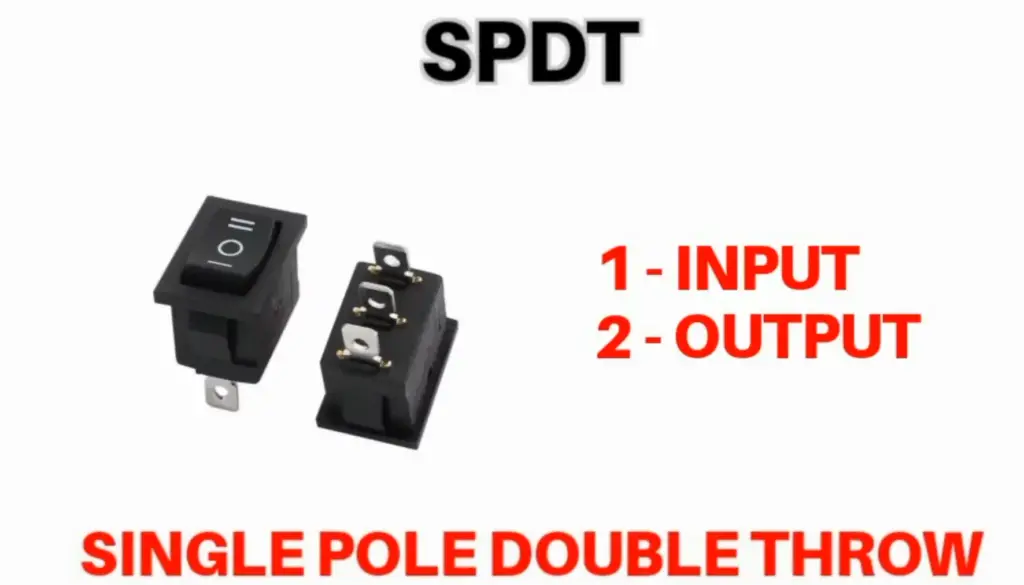
SPDT Switch Structure
It consists of a movable contact arm, two fixed contacts and two blades or pins. The movable contact arm can be flipped to select between the two positions it has: one in which it connects to one of the fixed contacts, and another in which it connects to the other. This allows for a single input signal to control its output from either of the two states.
The SPDT switch is typically used as an on-off switch, allowing for switching between two different circuits, outputs or features depending on its position. It may also serve as a changeover switch for alternate sources of power or signals, making it ideal for applications where redundancy is required.
SPDT switches can be found in a variety of devices such as cameras, computer peripherals and other electronic items. Due to its versatility, it is commonly used in hobbyist projects and prototyping boards. Its function can also be replicated using transistors or semiconductors for digital applications.
Given its simple structure and wide range of uses, the SPDT switch is an essential component for creating and controlling various electrical circuits. It has become a go-to solution for many engineers when looking to integrate basic switching capabilities into their designs. [2]
How Does SPDT Switch Work?
Its electromechanical abilities make it a superior choice for controlling electricity flow with utmost precision and accuracy. It works by having two sets of contacts, a single pole and two throws, separated by an actuator. The actuator can be moved to either the left or right side, sending current through the appropriate contact group and allowing electricity to flow in either direction.
When current is applied to the switch, it causes a magnetic force which moves the actuator from its rest position to connect either the left or right circuit depending on which way it was pushed. This action is called “throwing” and when this happens, the other connection is cut off from the circuit.
SPDT switches are commonly used in applications where a device or system requires two different electrical circuits to be connected, such as relays and motors, or for switching between multiple devices or systems. They are also used in logic circuits and other digital circuits to control the flow of information. They provide an important role in controlling electronic equipment, but they can also be found in everyday items like washing machines, vacuums, and power tools.
When working with SPDT switches it is important to make sure that the contacts are free from dirt or corrosion and that you have an understanding of their operation before installing them into your project. Although these switches work reliably, improper installation can cause unexpected results so use caution when using them and make sure that you read the instructions thoroughly.
These switches are an essential part of any electrical system and provide a simple yet effective way to control the flow of electricity through circuits. Whether it’s for relays, motors, or logic circuits, SPDT switches can provide reliable operation and long-lasting performance when installed correctly. With their versatility and reliability, it is no wonder why these switches have become so widely used in many different applications. [3]
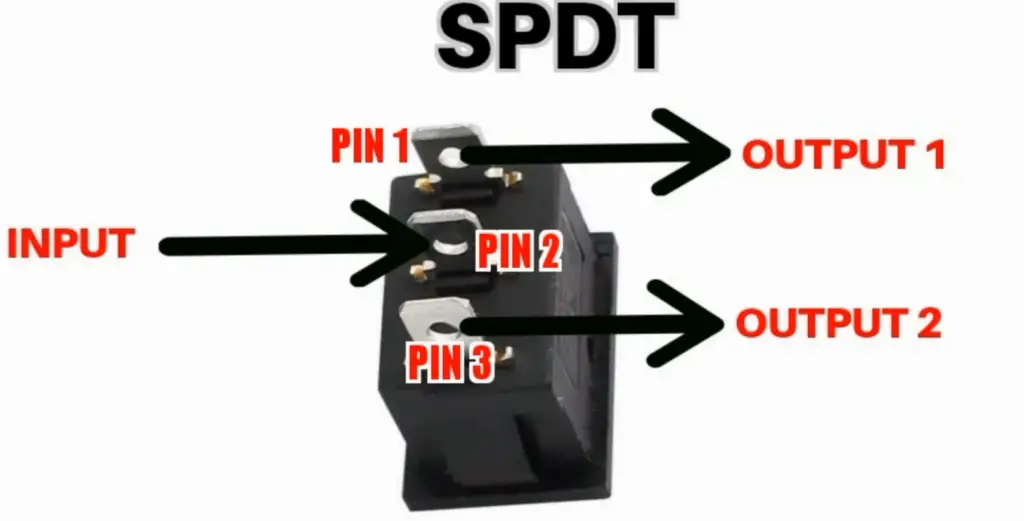
Types of SPDT Switch
SPDT (Single Pole, Double Throw) switches are commonly used in a variety of applications. They can be found in everyday household objects such as a light switch, electrical appliances and even toys. SPDT switches are versatile because they can be set up to control multiple functions. Depending on the type of application, there are three main types of SPDT switch available: Toggle Switches, Pushbutton Switches, and Rotary Switches.
Toggle Switches are probably the most common type of SPDT switch and feature two positions – one for each function it is controlling. When activated, energy is sent from one point to another via metal contacts; when deactivated it interrupts the flow of current. These types of switches can be used in various applications such as powering on/off a circuit or switching between two different operating modes.
Pushbutton switches are similar to toggle switches, but instead of flipping the switch up and down, they feature a pushable button that is either pressed or released to activate the switch. This type of SPDT switch is very useful for quickly controlling multiple functions with one input. They can also be used for things like resetting circuits and providing feedback signals when activated.
Rotary Switches offer yet another way of controlling multiple functions with one input. These switches feature a rotatable dial that turns clockwise to select the desired function. Rotary switches are especially useful for applications where more than two functions need to be controlled by one input, as they can have up to many positions.
Overall, SPDT switches are incredibly versatile and provide an excellent way of efficiently controlling multiple functions with one input. Depending on the application, any one of these three types of switch can be used for a variety of purposes. [4]
SPDT Switch Circuit Diagram
A SPDT switch circuit diagram consists of three terminals: one common terminal, one normally closed terminal and another normally open terminal.
The common terminal (C) can be connected to either the normally closed contact (NC) or the normally open contact (NO). When in its off state, the NC terminal will be connected to C while NO is disconnected from C. When the switch is switched on, it will connect NO with C and disconnect NC from C. This allows current to flow between two circuits or components when required.
In general, when using a SPDT switch circuit diagram, you must take into account any other components that are connected to it in order to ensure that the circuit is wired up correctly. This includes making sure all connections are correct, as well as checking for any potential short circuits. Additionally, if the switch is being used to control a live voltage source such as AC mains electricity, appropriate safety measures must be taken in order to prevent possible shock or fire hazards.
In conclusion, SPDT switches are widely used in many applications due their simple design and ability to reliably switch between two circuits. When designing with a SPDT switch circuit diagram, it is important to take into account any other components connected to the circuit in order to ensure that the wiring is correct and safe.
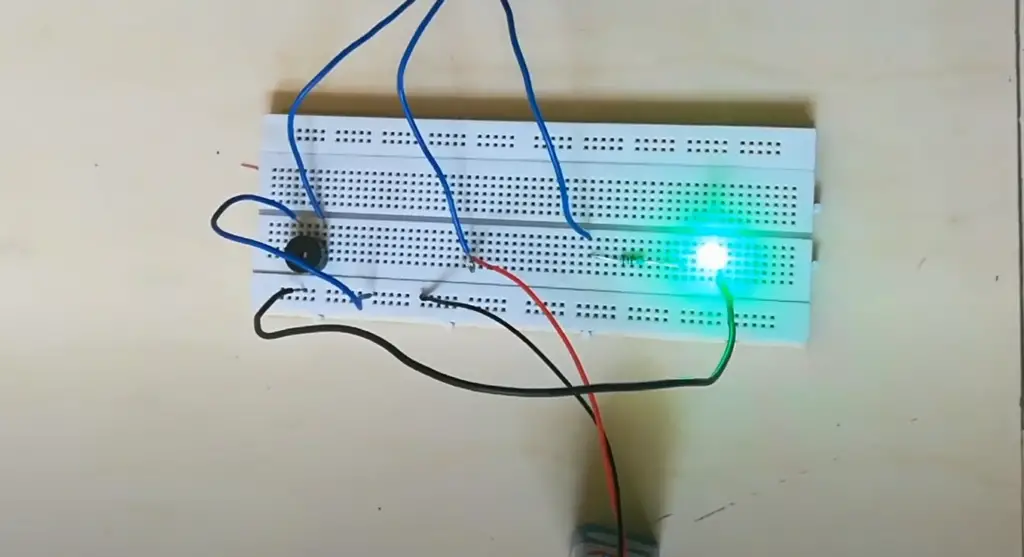
Advantages & Disadvantages
A SPDT switch has a number of advantages and disadvantages, depending on the application.
Advantages
- Easy to operate with only one moving part. This makes them ideal for applications where space is limited or there are multiple switches in operation.
- The single pole double throw (SPDT) switch offers more versatility than other types of switches due to its ability to change the connection between two terminals by simply flipping the switch.
- Can be used with multiple circuits, making it more versatile and cost-effective than a single pole toggle switch.
- They are available in both momentary and latching versions, allowing for greater flexibility when controlling electrical systems.
Disadvantages
- SPDT switches may be prone to wear and tear due to their single moving part. This can lead to poor performance or even failure if not properly maintained.
- Depending on the application, they may have a limited current carrying capacity, making them unsuitable for high power applications.
- They are more complex than other types of switches, which can make installation and troubleshooting difficult.
- Depending on the design, SPDT switches may also cost more than simpler alternatives. [5]
SPDT Switch Applications
SPDT switches are useful in a variety of applications, such as electric door locks, amplifiers, and light circuits. They can also be used to control the direction of electric motors or activate remote-controlled devices.
Furthermore, SPDT switches can be used in robotics for controlling the speed and direction of a motor or servo. In automotive wiring systems, SPDT switches are often used for window lifts and fan speeds.
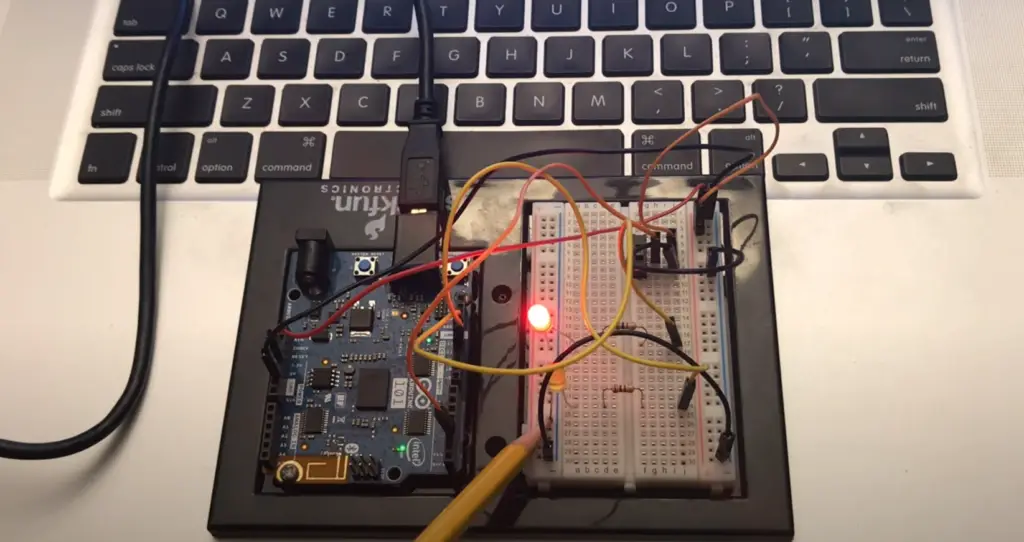
Additionally, they are commonly found in audio electronics where they act as toggle switches for selecting between different sound sources such as CD players and amplifiers. As SPDT switches offer two independent switching positions with precise contact closure, they are also popularly used in scientific instruments like oscilloscopes and logic analyzers.
What is the Difference Between SPDT and DPDT Switch?
It is typically used in circuits where one path must be selected from multiple paths. In contrast, a Double Pole, Double Throw (DPDT) switch is a type of switch with six terminals that can control two separate circuits simultaneously. DPDT switches can be used when the switching of two independent loads is required or in applications where both poles are needed for output reversal. SPDT and DPDT switches are both common components found in electronic devices today.
The major difference between SPDT and DPDT switches is their number of contacts or poles. An SPDT switch has three contacts and one control, while a DPDT switch has six contacts and two controls. This makes SPDT switches best for single-circuit applications where only one output path is needed, such as in audio amplifiers or small motor controllers. On the other hand, DPDT switches are better suited for two-circuit applications that require both poles to be connected, such as reversing motor direction or controlling two independent loads.
Both SPDT and DPDT switches are versatile components that can be used in a variety of applications. They provide reliable switching action with minimal power consumption and have low contact resistance, making them ideal for use in modern electronic devices. The type of switch required will depend on the specific application and the number of circuits involved. Understanding the differences between SPDT and DPDT switches can help engineers make informed decisions when choosing a switch for their project.

Overall, SPDT and DPDT switches are two very important components in modern electronics that have different uses depending on the application. An SPDT switch is useful for single-circuit applications while a DPDT switch is better suited for two-circuit applications. Both types of switches offer reliable operation with minimal power consumption and low contact resistance making them ideal choices for any electronic device or circuit design. [6]
FAQ
What is an SPDT switch used for?
It has three terminals: one common terminal and two separate circuit connections. A SPDT switch can be used in many applications, such as selecting between two power sources or controlling the direction of a motor. In addition, it can be used for various other purposes like audio switching and signal routing.
How does an SPDT switch work?
An SPDT switch works by connecting the common terminal (the center pin) with either of the remaining two terminals depending on its position. When in one position, the common terminal will be connected with one of the outer terminals; when in the other position, it will be connected with the other outer terminal. This allows you to switch between two different circuits, depending on the setting of the switch.
What are the advantages of using an SPDT switch?
An SPDT switch is a simple and cost effective way to control multi-circuit devices or appliances, like motors and lights. It can also be used to select between power sources or audio signals, allowing for more efficient use of resources and improved sound quality. In addition, its compact size makes it easy to mount in tight spaces.
Are there any disadvantages to using an SPDT switch?
The main disadvantage of using an SPDT switch is that it only offers two circuit positions; if you need more than two selections then a different type of switch is required. In addition, the common terminal will always be connected to one of the two outer terminals, which can cause some confusion when troubleshooting an issue. Finally, if a user does not fully understand how an SPDT switch works, it can potentially lead to dangerous conditions in certain applications.
Are there any safety considerations when using an SPDT switch?
Yes, as with all electrical components, it’s important to ensure that you are following the proper safety precautions when handling and installing an SPDT switch. Make sure that all connections are tight and secure; use insulated tools where necessary; and never touch live wires or exposed metal parts. Additionally, make sure that you have properly identified the correct circuits before making any connections. It is also important to note that when using an SPDT switch in a high voltage application, it is necessary to use a suitable barrier or insulation system between the switch and the circuit. This will help prevent any dangerous electrical shock hazards. Additionally, if you are unsure of how to safely wire a SPDT switch, consult an experienced electrician or qualified technician for assistance.
Useful Video: Reading a SPDT Switch
Conclusion
In conclusion, SPDT switches are a type of switch that can be used in a variety of applications to control electrical current. They provide flexibility and reliability, and their small size makes them suitable for use in many electronic devices. While SPDT switches have three terminals — two inputs and one output — they are often referred to as “single-pole double-throw” switches due to the fact that only one input is connected at any given time. This means that the SPDT switch can be used to choose between two different circuits by simply flipping the switch from one position to another. With its versatility and convenience, it’s no wonder why SPDT switches are so popular in both industrial and consumer electronics.
References
- https://www.arrow.com/en/research-and-events/articles/understand-the-fundamentals-of-switch-poles-and-throws
- https://www.elprocus.com/spdt-switch/
- http://www.learningaboutelectronics.com/Articles/What-is-a-single-pole-double-throw-switch-SPDT
- https://www.electrical4u.net/switch/what-is-single-pole-double-threw-switch-spdt-working-application/
- https://pressbooks.bccampus.ca/lightingforelectricians/chapter/single-pole-double-throw-spdt-a-k-a-the-3-way-switch/





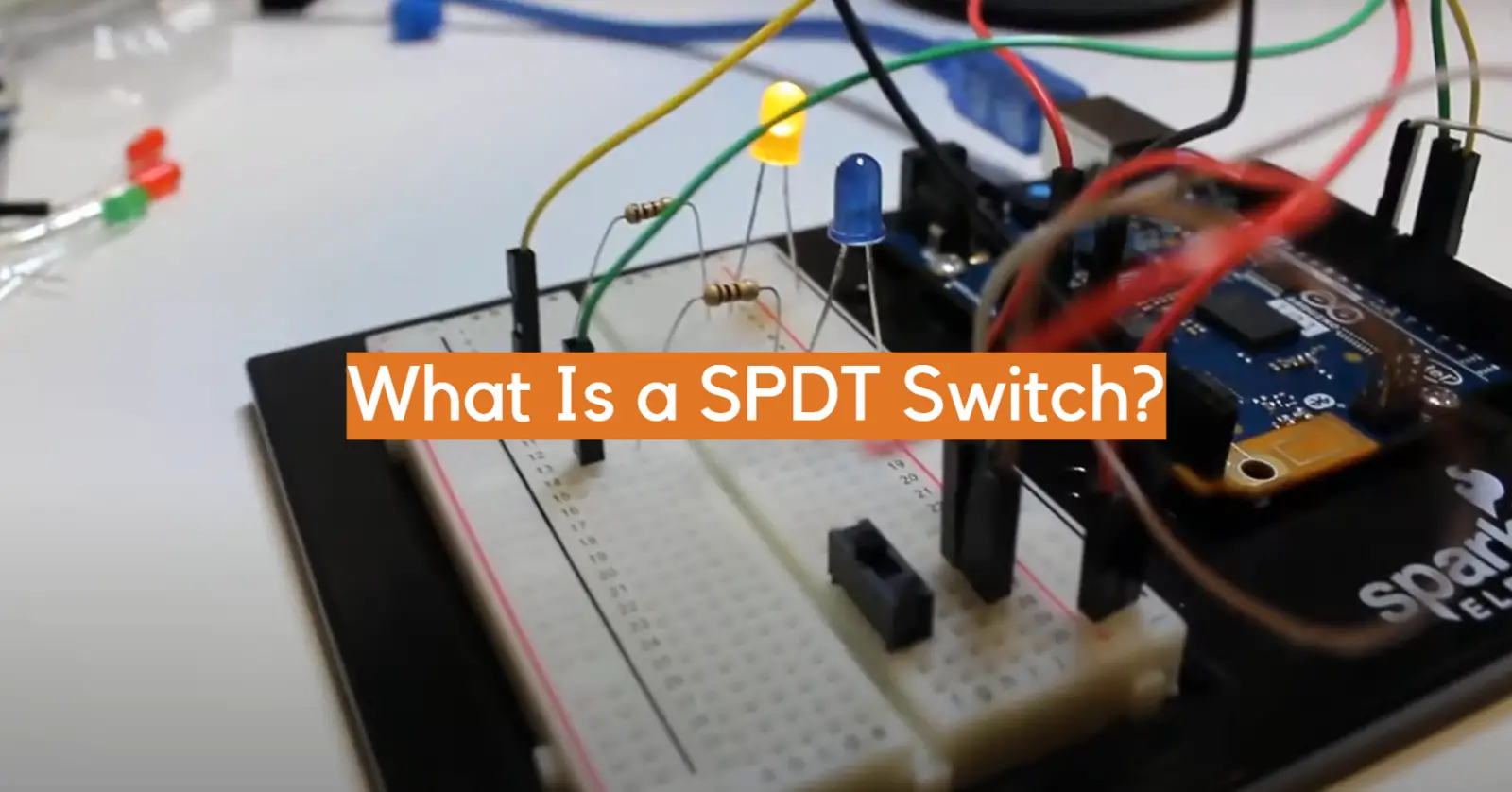




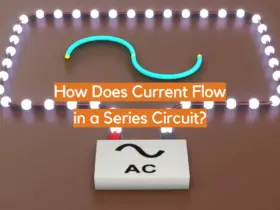



Leave a Reply